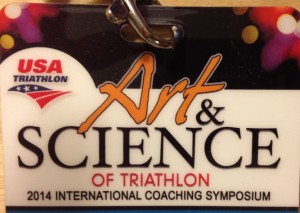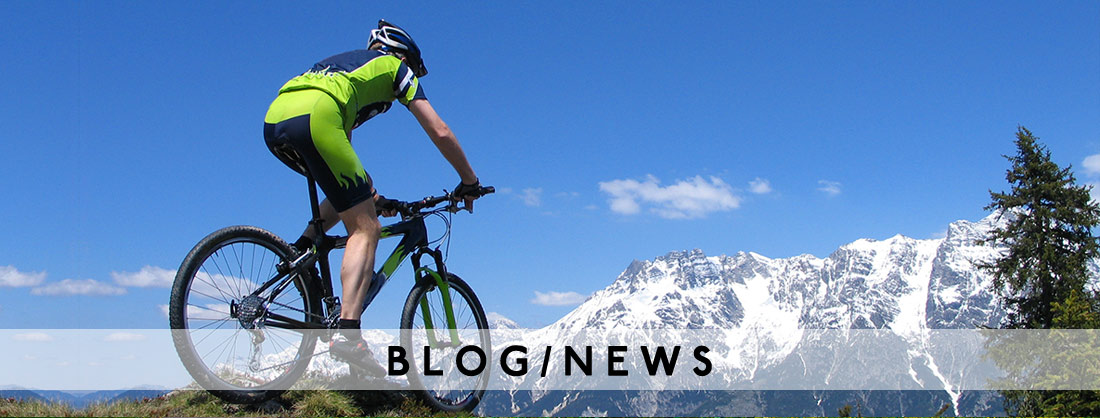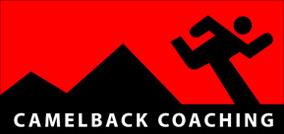 The USAT Art and Science of Triathlon 2014 International Coaching Symposium was held at the Mandalay Bay Hotel and Casino in Las Vegas this year—I know, rough—just upstairs from Interbike, where vendors showcased the latest and greatest in technologies and advancements in the bike industry.
The USAT Art and Science of Triathlon 2014 International Coaching Symposium was held at the Mandalay Bay Hotel and Casino in Las Vegas this year—I know, rough—just upstairs from Interbike, where vendors showcased the latest and greatest in technologies and advancements in the bike industry.
But while bike technology continues to develop, along with other equipment and training aids found in triathlon, the overwhelming takeaway from the conference this year was that basic, current coaching principles remain valid. What was accurate twenty, thirty, forty years ago is still accurate today, and published studies continue to confirm this. So we would not categorize the information presented at this year’s conference as “learnings” so much as “affirmations.”
The other takeaway of note was communicated by this year’s keynote speaker—Michael Phelps’s coach, Bob Bowman—who laid waste to the myth (and marketing) of coaches who claim to have a unique, vastly superior coaching methodology. Why? Because everything we teach is available somewhere in the public domain, and if these revolutionary coaching methods were really that great, most of us would have adopted them.
Mr. Bowman stated in no uncertain terms that there is no secret set, no highly classified training regimen, and certainly no “super coach” that dispenses training advice that no one else knows about. The “recipe” for coaching endurance athletes is the same across the board. You build foundation. You incorporate high intensity work. You strength train. You listen to your athletes, communicate, motivate.
Beyond these two main themes, I’ve listed below several topics presented at the conference, in no particular order, along with general thoughts. You’ll see a pattern in that if it’s training related, it’s not new.
1. The most important training element for any athlete is consistency, day in and day out. In other words, the hardest part of regular exercise is the “regular,” not the “exercise.” Hear! Hear! Truer words have not been spoken.
2. Lecturers across the board repeated that periodization, long duration/ low intensity work, short duration/ high intensity work, strength training, flexibility, and dedication to gaining efficiency in technique are still the hallmarks of a quality training program.
3. In speaking with other coaches, we sensed a bit of a backlash against technology. Most felt that too much time is being spent here, and it takes away from what people enjoy about the sport and what used to be fun. All the triathlon greats—Dave Scott, Mark Allen, Scott Tinley, Scott Molina and the rest—trained and raced at the highest levels, indeed comparable with today’s highest performing athletes, with nary a Garmin in sight.
4. Triathlon is flattening in growth. USAT is trying to come up with initiatives to encourage participation by children who do not have triathlete parents.
5. USAT would like to increase diversity in its membership.
6. Speaking to the previous three points, the underlying irony is that technology could be—and probably is—inhibiting the sport’s growth. What better way to turn off someone from the inner city than introduce them to a sport that “requires” Training Peaks software, a $6,000.00 tri bike and $3,000.00 power meters?
7. In the world of bike fitting, there’s a renewed emphasis on comfort and sustainability of the rider position over pure aerodynamics. This is obviously not new.
8. In swimming, there was an emphasis on efficiency along with the recognition that open water swimming with people all around you presents a significant challenge to maintaining efficiency. Being able to remain relaxed and maintain form in that chaos is critical. Uh . . . yeah. Not new.
9. The word “doping,” never surfaced. Talk about having your head in the sand. This is one area where triathlon needs to pay attention or we risk going down the path that some of our sister sports have.
10. High intensity training is critical for maximizing performance. According to research, the most effective intervals are longer intervals as opposed to shorter intervals. That is, four- to ten-minute intervals versus fifteen- to thirty-second intervals. Nothing new here.
11. At the “high intensity” lecture, the takeaway was that less is more. This refers to the overall volume of high intensity training performed throughout the year, not the duration of the interval itself. A story was related about Paula Newby-Fraser, eight-time Ironman Hawaii winner, who, one year, tried to keep up with peers who had adopted a training regimen that included high volumes of high-intensity training, and said it was the biggest mistake of her career. She ended up injured and had a catastrophic melt-down in Kona that year.
12. Insecurity is one of the leading reasons for pursuing too much high-intensity training. We sound like broken records on this one. Trust in the plan. Be patient. Too much, too soon, can destroy all gains from a well-laid training program.
13. Vegans can compete at a high level of athletic performance, but it requires a lot of food and a lot of planning.
14. The mental aspect of racing received a lot of attention this year. Bob Bowman highlighted this in his speech about training Michael Phelps. You develop your mental toughness through training and visualization.
15. Jeff Galloway, noted long-time running coach and author, expanded on this in his lecture on the mental aspects of long-distance running. He suggested mental tricks such as mantras. His favorite is to repeat the following when you wake up early to train: “Feet on the floor. Alarm off. Coffee.”
16. Also from Jeff Galloway, the run-walk method is viable on long training runs, in addition to races. Our Ironman athletes, in particular, have known this for years.
17. Programs for kids should be fun, skills based, non-technical, and without parental interference.
18. New athletes need to remember patience. Enjoy and embrace the journey. Make Ironman a long-term goal, not a short term goal.
19. Integrity in the coaching community. In a poll among coaches who have been in the business the longest, this was a big worry. New coaches want to be big and they want it right now. Short cuts, promotion of supplements and fads, and pie-in-the-sky promises often accompany such new coaches. Athletes beware of the coach promising the moon with their trademarked “such-and-such method.” These are marketing tools, pure and simple.
20. Absent this year was the talk of fads like barefoot running, shoes that promote forefoot strikes, and CrossFit methods for getting out of bed in the morning.


